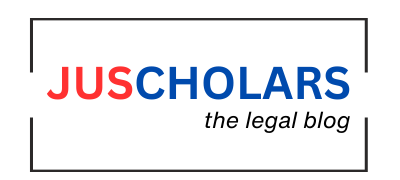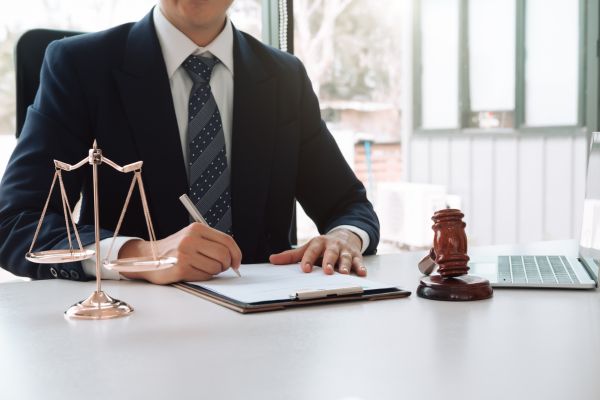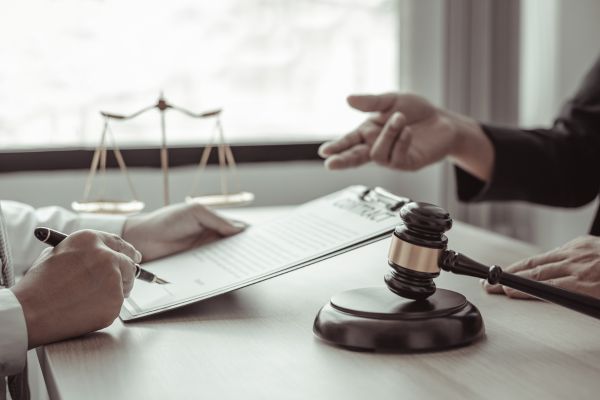Abstract
Generative AI is changing creative industries, from mesmerizing visuals to sophisticated essays and musical compositions. However, legal debates are also emerging on the ownership of copyrights – can AI or its collaborating human be considered a true author? Traditional copyright laws emphasize originality, fixation, and human authorship, which puts a question mark over AI’s right to creative ownership.
Indian and international courts point out that there still remains a human touch in such copyright material and AI cannot possibly have conscious intent or creativity. Moral rights safeguard human dignity and reputation behind creative works but AI does not possess the legal personality to claim these rights. The future of AI-generated content will require savvy new legal mechanisms, possibly recognising AI users and developers as co-authors or introducing sui generis protections.
The article aims to explore and critically analyze the intersection of AI-generated content and copyright laws. As technology advances, there is a need to balance both innovation and fair play for creators.
Introduction
Generative AI often viewed like a pure technological sorcery. It has stunning visuals produced by such platforms as DALL·E 2, Stable Diffusion and Midjourney, to paintings created using AI and presented at the most respectable institutions like the Museum of Modern Art or the Mauritshuis, in which artistic freedom seems unlimited[1]. it does not end in visual artistry; text producers like ChatGPT and GPT-4 are no different, creating whole essays, and even complex and lengthy pieces, like screenplays, or as a mimic to emulate different writers’ styles of writing. Musical composition is an area where creators like AIVA and Amper use AI techniques to compose innovative symphonies that are intertwined with human invention.
Artists start creating complex multimedia installations with AI while designers start creating virtual fashion and architectural concepts. with AI generated works spreading through the creative industries, an important question has emerged: Who owns the rights of authorship for these works? This blog delves into the changing discussion on copyright and whether AI or its human co-creators can ever really be considered the authors.[2] To truly grasp whether AI-generated works can claim authorship, it is essential to explore questions surrounding their moral rights (by Gil Appel, 2023).
Copyright and Conventional Authorship
Copyright law grants creators’ control over the use and distribution of original works, for the protection of their rights. Traditionally, a work that meets three core criteria qualifies to be protected:
- Originality: The work must be the result of independent creativity.
- Fixation: The work must be captured in a tangible form.
- Human Authorship: The creator must be a human being.
This third requirement “human authorship” has become a central issue in debates surrounding AI-generated works. Section 2(d)8 of the Indian Copyright Act defines “author” as the person responsible for creating the work. However, Courts have consistently upheld that human creative input suffices for copyright protection, even when technological tools are used, as emphasised in the global copyright standard outlined in analogous international cases like Feist Publications v. Rural Telephone Service[3], is that a work must demonstrate a minimum level of creativity or originality to be eligible for copyright protection, meaning that simply compiling factual information without any creative selection or arrangement is not enough to claim copyright; essentially, “sweat of the brow” effort alone does not constitute copyrightable originality. The Copyright Act, 1957, as amended in 1994, also provides for works created by computers.
Section 2(d)(vi)22[4] defines the author of such “computer-generated works” as “the person who causes the work to be created.” Such a provision can be read very widely to encompass the rights of people who input the data or instructions to an AI system, leading to the generation of computer-generated work.
However, in the case Navigators Logistics Ltd. v. Kashif Qureshi & Ors[5], the Court while decreeing a case relating to stealing of confidential copyrighted information expressed its opinion that the author of a literary work should be a natural person and not an artificial one, and an author can only get protection under Copyright Act, 1957 only if he creates a work of literary character by means of his skill and judgment. Copyright cannot subsist if there is neither any skill nor judgment used in the compilation.
AI alone, without any human input, cannot generate any content, The generated content is wholly based on the prompt given by the user according to his requirements. They lack independent thinking as that of a human. Human authorship is an essential condition for copyright protection and ownership. On a conjoint reading of Section 2(d)(10) and Section 17(11) of the Copyright Act, 1957 it would be construed that copyright can be claimed only by a natural person. protection under the Copyright Act, 1957.
In Eastern Book Company v. D.B. Modak), the Supreme Court of India held that originality in a copyrightable work involves a modicum of creativity. This means that copyright protection cannot extend to purely mechanical processes or works devoid of human involvement.[6] Thus, AI does not possess the conscious intent or creativity to qualify as an author under the Act.
The case made an important precedent as it emphasized that the work must be of original creation as works generated by AI lack creativity and originality and human intervention will not be regarded as original works entitled to copyright protection; hence AI cannot be termed an author since it does not fulfil the essentials to be called an author, considering it requires human input and creative genius for the reason of authority and originality, both which are absent in AI as it is the product of algorithms and mechanical machines[7].
Although the current provisions of the Copyright Act, 1957, do not provide clarity on authorship in AI works, this case is an apt precedent. SAHNI included RAGHAV as a co-author in his application and its acceptance establishes the viability of AI generated works under the current regime of law, if human contribution can be established. The case makes the point that the human role in training AI and curating its datasets is very important.
As Sahni used datasets such as Vincent van Gogh’s “Starry Night” to train RAGHAV, this strengthens the argument that AI is an extension of human creativity and can be regarded as a co-author. Further the Parliamentary Standing Committee’s recommendation to review the Copyright Act to incorporate AI and AI-related inventions aligns with the recognition granted to Sahni and RAGHAV.
The committee’s acknowledgment of AI’s role in creative works. The Union Minister of State for Commerce and Industry, Shri Som Parkash, in his statement to the Rajya Sabha, was of the view that current legislation under the Indian Copyright Act, 1957 is sufficient to cover AI-generated works and associated innovation.[8]
The Intersection of AI and Moral Rights
Moral rights recognize the personal right of the author to his work, beyond monetary concerns. The integrity of creative works is protected by moral rights, which promotes the enrichment of society and protects cultural heritage. Section 57 ensures that these rights promote the status of intellectual property, focusing on the relationship between creators and their work.
This interpretation aligns with judicial observations that emphasize the protection of cultural enrichment as a social interest. AI systems do not conjure creative content from thin air. Instead, they are trained on vast datasets of images, text, and other media to recognize patterns and generate outputs based on user prompts. These systems can mimic artistic styles, compose music, and even write books. However, they do not possess consciousness, intent, or emotional engagement qualities typically associated with human creativity.
However the Moral rights are inherently tied to human dignity and reputation, which are attributes AI cannot possess. only human authors or owners can claim moral rights, as AI lacks the legal personality necessary to hold such rights. In Amar Nath Sehgal v. Union of India,[9] the Delhi high Court of India held that originality in a copyrightable work involves a modicum of creativity. Thus, AI does not possess the conscious intent or creativity to qualify as an author under the Act.
The case made an important precedent as it emphasized that the work must be of original creation as works generated by AI lack creativity and originality and human intervention will not be regarded as original works entitled to copyright protection; hence AI cannot be termed an author since it does not fulfil the essentials to be called an author, considering the Kaw requires human input and creative genius for the reason of authority and originality, both which are absent in Ai as it is the product of algorithms and mechanical machines.
Further an Author must be a legal person Capable of Holding rights and liabilities, an Ai system’s lack legal personality and cannot hold copyright, or claim exclusive moral rights that are only guaranteed to authors.
The Future of AI-Generated Works
The problem of authorship for AI-generated works is a complex and evolving one that challenges the existing notions of creativity and intellectual property. While the current legal frameworks emphasize human authorship, rapidly advancing AI technology presses for the reimagining of copyright principles.[10]
As we move on to this new era of creativity, finding an apt balance which fosters innovation but respects the rights of the creator would be crucial. The path forward in addressing the issue of AI-generated works could involve several potential legal frameworks. One approach is adopting co-authorship models that recognize both AI users and developers as joint creators of the content.
Another option is introducing a specialized legal system, or sui generis protection, tailored specifically for AI-generated works, distinct from traditional copyright laws. Additionally, international collaboration is crucial for establishing standardized regulations on AI-generated content, ensuring consistent and fair rules across borders. These frameworks could provide a balanced solution as technology and creative processes continue to evolve.
In conclusion
The debate over who should hold copyright for AI-generated works highlights the complexity of evolving technologies and their intersection with traditional legal frameworks. While arguments favouring the AI programmer, the user, or even the AI itself all present valid points, the overarching legal stance globally appears to prioritize human involvement as a core criterion for copyright eligibility.
Legal systems, including those in the United States, European Union, and India, continue to emphasize human authorship, reflecting the philosophical and moral understanding that copyright should be tied to entities capable of holding responsibility and rights. As AI technology advances, however, this issue may require re-examination to ensure that copyright laws remain relevant in an increasingly automated creative landscape.
[1] The Role of AI Art in Contemporary Museums, 44 J. Mus. & Cult. 75 (2023).
This would highlight the institutional recognition of AI-generated art.
[2] Matthew R. Whelan, AI as Artist: The Copyright Implications of Generative Art, 59 Harv. J. L. & Tech. 323, 326–31 (2022).
[3] Feist Publications, Inc. v. Rural Tel. Serv. Co., 499 U.S. 340, 358 (1991).
[4] Indian Copyright Act, 1957, § 2(d)8 (amended 1994).
[5] Navigators Logistics Ltd. v. Kashif Qureshi & Ors., 2018 SCC OnLine Del 11791, ¶ 19 (India).
[6] Eastern Book Co. v. D.B. Modak, (2007) 1 S.C.C. 1, ¶ 45 (India).
[7] Sahni v. Raghav: A Landmark Case for AI in Copyright Law, 22 J. Art. L. & Tech. 45 (2021).
[8] Statement by Shri Som Parkash, Union Minister of State for Commerce and Industry, Rajya Sabha, Discussion on AI-generated Works under the Indian Copyright Act (2021), available at https://rajyasabha.nic.in.
[9] Amar Nath Sehgal v. Union of India, (2005) 4 SCC 18, ¶ 32 (India).
[10] World Intellectual Property Organization (WIPO), WIPO Technology Trends 2021: Artificial Intelligence (2021), available at https://www.wipo.int.
Author: B. Dhanusri is a BBA LLB (Hons) 2027 student at Alliance University, Alliance School of law





